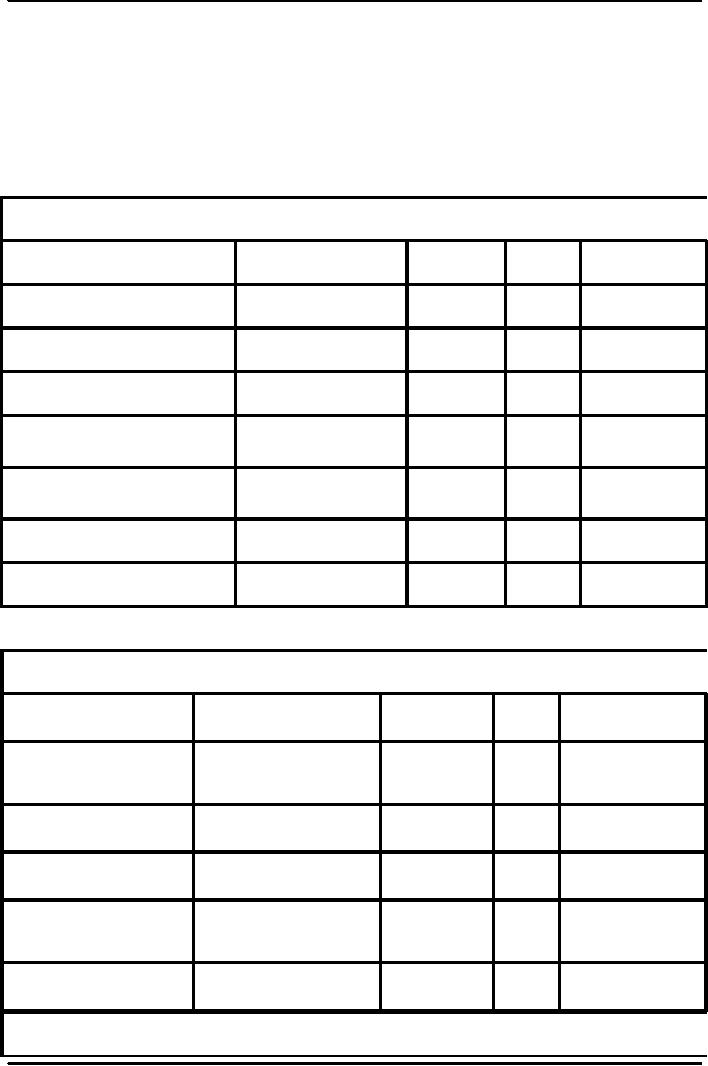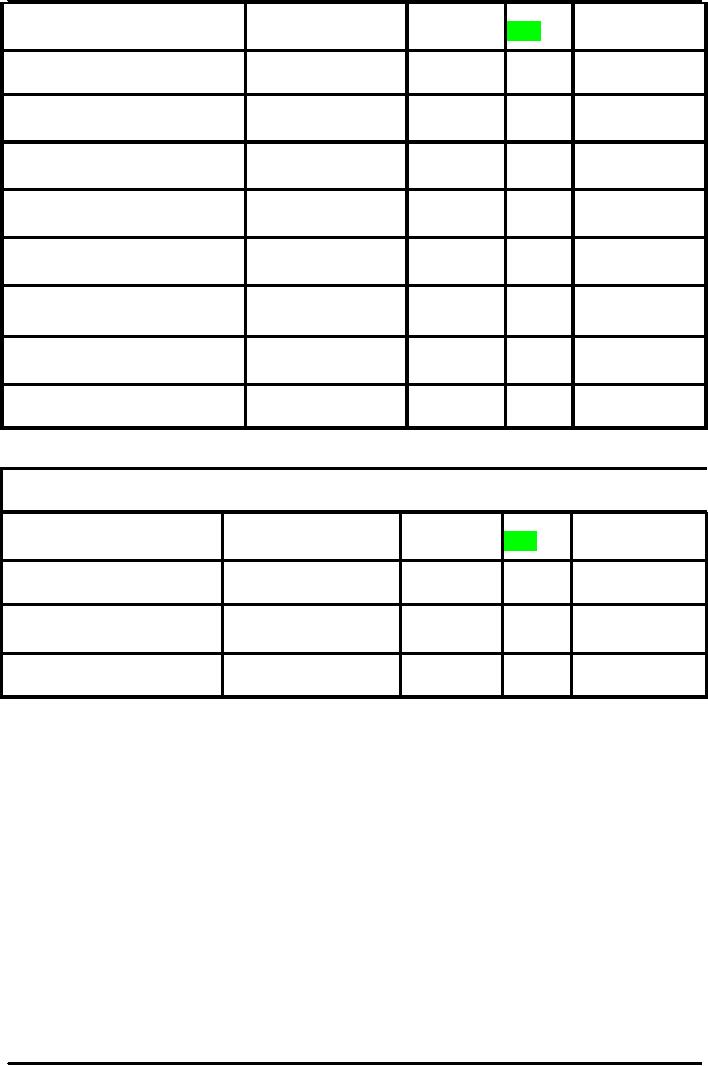 |

Project
Management MGMT627
VU
LESSON
18
PROJECT
PLANNING (CONTD.)
Broad
Contents
Sorting
Out Projects
Objectives
and Reasons of Project
Planning
Policies,
Procedures and Standards in
Projects
18.1
Sorting
Out Project:
As
we move into consideration of
details of project, we need to
know exactly what is to be done,
by
whom,
and when. All activities required to
complete project must be precisely
delineated and
coordinated.
Necessary resources must be
available when and where
they are needed, and in
correct
amounts.
Some activities must be done
sequentially, but some may
be done simultaneously. If large
project
is to come in on time and within
cost, great many things must
happen when and how they
are
supposed
to happen. In this section, we propose
conceptually simple method to assist in
sorting out and
planning
all this detail.
To
accomplish any specified project, several
major activities must be
completed. First, list them
in
general
order in which they would
normally occur. Reasonable number of
major activities might
be
anywhere
between two and 20. Break
each of these major
activities in two to 20 subtasks.
There is
noting
sacred about these limits.
Two is minimum possible breakdown and 20
is about largest number
of
interrelated items that can be
comfortably sorted and scheduled at
given level of task
aggregation.
Second,
preparing network from this
information is much more difficult if
number of activities is
significantly
greater than 20.
It
is important to be sure that
all items in list are at
roughly same level of task
generality. In writing
book,
for example, various
chapters tend to be at same
level of generality, but
individual chapters
are
divided
into finer detail. Indeed,
subdivisions of chapter may be divided
into finer detail still. It
is
difficult
to overstate significance of this simple
dictum. It is central to preparation of
most of planning
documents
that will be described in this chapter
and those that
follow.
Some
times problem arises because
some managers tend to think
of outcomes (event) when
planning
and
other think of specific
tasks (activities). Many mix
two. Problem is to develop
list of both
activities
and
outcomes that represents
exhaustive, non-redundant set of
results to be accomplished (outcomes)
and
work to be done (avidities) in order to
complete project.
Procedure
proposed here is hierarchical planning
system. First, goals must be
specified. This will
aid
planner
in identifying set of required
activities for goals to be met, project
action plan. Each activity
has
outcome
(event) associated with it,
and these activities and events
can be decomposed into
sub-activities
and
sub-events, which may, in
turn, be subdivided again.
Project plan is set of these
action plans.
Advantage
of project pan is that it contains all
planning information in one
document.
Assume,
for example, that we have
project whose purpose is to acquire and
install large
machining
center
in existing plant. In hierarchy of
work to be accomplished for installation
part of project, we
might
find such tasks as "Develop
plan for preparation of
floor site" and "Develop
plan to maintain
plant
output during installation and
test period". These tasks
are two of larger set of
jobs to be done.
Task
" . . . preparation of floor site" is
subdivided into its
elemental parts, including
such items as "get
specifics
on machine center mounting points".
"Check construction specification on
plant floor" and
"Present
final plan for floor
preparation for
approval".
Short
digression is in order before continuing
this discussion on action plans.
Actual form action
plan
takes
is not sacrosanct. In some
cases, for example, amounts
of specific resources required
may not be
134

Project
Management MGMT627
VU
relevant.
On others, "due dates" may be substituted
for activity durations. Appearance of
action plans
differs
in different organizations, and may even
differ between departments or division of
same
organization
(though standardization of format is
usual, and probably desirable in any
given firm). In
some
plans, numbers are used to
identify activities; in others, letters. In
still others, combinations of
letters
and numbers used.
Tree
diagram can be used to
represent hierarchical plan.
Professor Andrew Vazsonyi
has called this
type
of
diagram Gozinto
Chart after
famous Italian mathematician, Professor
Zepartzat, Gozinto, of
Vazsonyi's
invention (Readers familiar
with Bill of Materials in
Materials Requirements Planning
(MRP)
system will recognize parallel to
nested hierarchical
planning).
Objective:
Career Day
Steps
Responsibility
Time
(Weeks) Prec.
Resources
1.
Contact Organizations
a.
Print forms
Secretary
6
-
b.
Contact organizations
Program
Manager
15
1.
A
c.
Collect display
information
Office
Manager
4
1.
B
d.
Gather college
particulars
Secretary
4
1.
B
e.
Print programs
Secretary
6
1.
D
f.
Print participants' certificates Graduate
Assistant
8
-
Objective:
Career Day
Steps
Responsibility
Time
(Weeks)
Prec.
Resources
2.
Banquet
and
Refreshments
a.
Select guest speaker
Program
Manager
14
-
b.
Organize food
Program
Manager
3
1.
b
Caterer
c.
Organize liquor
Director
10
1.
b
Dept
of
Liquor
Control
d.
Organize refreshment Graduate Assistant
7
1.
b
Purchasing
Objective:
Career Day
135

Project
Management MGMT627
VU
Steps
Responsibility
Time
(Weeks) Prec.
Resources
3.
Publicity and Promotion
a.
Send invitations
Graduate
Assistant
2
-
World
processing
b.
Organize gift certificates
Graduate
Assistant
5.5
-
c.
Arrange banners
Graduate
Assistant
5
1.
d
Print
shop
d.
Contact faculty
Program
Manager
1.5
1.
d
Word
processing
e.
Advertise in college
paper
Secretary
5
1.
d
Newspaper
f.
Class announcements
Graduate
Assistant
1
3.
d
Registrar's
office
g.
Organize posters
Secretary
4.5
1.
d
Print
shop
Objective:
Career Day
Steps
Responsibility
Time
(Weeks) Prec.
Resources
4.
Facilities
a.
Arrange facility for
event
Program
Manager
2.5
1.
c
b.
Transport materials
Office
Manager
.5
4.
a
Movers
Table
18.1: Partial
Action Plan for College
"Career Day"
136

Project
Management MGMT627
VU
Level
00089
Toy
bus
0
10003
10002
Level
10189
Case
Packing
1
Toy
bus
Level
20003
20289
2
Bus
box
Toy
bus
30089
30077
Wheel/a
Body
Level
3
Level
400337
50317
40050
40039
4
Plastic
Plastic
Axle
Wheel
50317
50702
Level
Plastic
Plastic
5
Figure
18.1: Gozinto
Chart for Toy
Bus
Important
of careful planning can scarcely be
overemphasized. Slevin developed list of
ten
factors
that should be associated
with success in implementation
projects. Factors split
into
strategic
and tactical clusters. Of interest here
are strategic
factors:
·
Project
Mission:
It
is important to spell out
clearly defined and agreed-upon goals in
beginning of project.
·
Top
Management Support:
It
is necessary for top
managers to get behind project at
outset and make clear to
all
personnel
involved that they support
successful completion.
·
Project
Schedule or Plan:
Detailed
plan of required steps in
implementation process needs to be
developed, including
all
resource requirements (money, raw
materials, staff and so
forth).
At
this point, it might be
helpful to sum up this section
what description of how
planning
process
actually works in may
organization. Assume that
you as project manager have
been
given
responsibility for developing computer
software required to transmit
medical X-Ray
from
one location to another over telephone
line. There are several problems
that must be
solved
to accomplish this task. First X-Ray
image must be translated into
computer
language.
Second, computerized image must be
transmitted and received. Third,
image
must
be displayed (or printed) in
way that makes it
intelligible to person who
must interpret
it.
You have team of four programmers
and couple of assistant programmers as
signed to
you.
You also have specialist in radiology
assigned part-time as medical
advisor.
137

Project
Management MGMT627
VU
S#
Steps
Due
Date
Responsible
Precedent
1.
Ajax
management advised of changes
24/7
Bob,
Van
-
2.
Begin
preparing Instat sales dept
to sell Ajax 24/7
Bob
1
consumer
Division products effective
1/1/96
3.
Prepare
to create two sales groups:
(1) Instat (2)
1/8
Bob
1
Ajax
Builder Group effective
1/1/96
4.
Advise
Instat regional managers of
sales division 1/8
Bob
2,3
changes
5.
Advise
Ajax regional managers of
sales division 1/8
Van
2,3
changes
6.
Visit
Ajax management and plan to
discuss merger 1/8
Smith
4,5
of
operations
7.
Advise
Ajax sales personnel and
agents
14/8
Smith
6
8.
Visit
Instat to coordinate changeover
26/8
Bob
6
Gerard
9.
Interview
Ajax sales personnel for possible
30/8
Instat
Regional
7
positions
Manager
Table
18.2: Tabular
Action Plan for Ajax-Instat
Merger
Your
first action is to meet with
programmers and medical advisor in
order to arrive at
technical
requirements
for project. From these
requirements, project mission statement and
detailed
specifications
will be derived. (Note that
original statement of your
"responsibility" is too vague
to
act as acceptable mission statement).
Team then develops basic actions
needed to achieve
technical
requirements for project. For
example, one technical requirement
would be to develop
method
of measuring density of image at every
point on X-Ray and to represent
this
measurement
as numerical input for
computer. This is first
level of project's action
plan.
Responsibility
for accomplishing first
level tasks is delegated to project
team members who
are
asked
to develop their own action
plans for each of first
level tasks. These are
second level
action
plans. Individual tasks listed in
second level plans are then
divided further into their
level
action
plans detailing how each
second level task will be
accomplished. Process continues
until
lowest
level tasks are perceived as
"units" or "packages" of
work.
18.2
Objectives
and Reasons of Project
Planning:
One
of the objectives of project planning is
to completely define all
work required
(possibly
through
the development of a documented project
plan) so that it will be
readily identifiable to
each
project participant. This is a
necessity in a project environment
because:
138

Project
Management MGMT627
VU
·
If
the task is well understood prior to
being performed, much of the
work can be
preplanned.
·
If
the task is not understood, then
during the actual task execution more
knowledge is
gained
that, in turn, leads to
changes in resource allocations,
schedules, and
priorities.
·
The
more uncertain the task, the greater the amount of
information that must be
processed
in
order to ensure effective
performance.
These
considerations are important in a project
environment because each
project can be
different
from the others, requiring a
variety of different resources,
but having to be
performed
under
time, cost, and performance constraints
with little margin for
error.
Without
proper planning, programs and projects
can start off "behind the
eight ball" because
of
poorly
defined requirements during the initial
planning phase.
There
are four
basic reasons for project
planning:
·
To
eliminate or reduce
uncertainty
·
To
improve efficiency of the
operation
·
To
obtain a better understanding of the
objectives
·
To
provide a basis for
monitoring and controlling
work
There
are involuntary and voluntary
reasons for planning.
Involuntary reasons can be
internally
mandatory
functions of the organizational
complexity and an organizational lag in
response time; or
they
can be externally correlated to
environmental fluctuations, uncertainty,
and discontinuity.
The
voluntary
reasons for planning are
attempts to secure efficient and
effective operations.
Planning
is decision making based
upon futurity. It is a continuous
process of making
entrepreneurial
decisions with an eye to the future, and
methodically organizing the
effort
needed
to carry out these decisions.
Furthermore, systematic planning
allows an organization to
set
goals. The alternative to systematic
planning is decision making
based on history.
This
generally
results in reactive management
leading to crisis management, conflict
management,
and
fire fighting.
18.3
Policies,
Procedures and
Standards:
A
policy
is
a deliberate plan of action to
guide decisions and achieve rational outcome(s).
The
term
may apply to government,
private sector organizations and groups,
and individuals.
Presidential
executive orders, corporate privacy
policies, and parliamentary rules of
order are all
examples
of policy.
A
procedure
is
a specification of series of actions,
acts or operations, which have to
be
executed
in the same manner in order to
always obtain the same
result in the same
circumstances
(for example, emergency procedures).
Less precisely speaking, this
word can
indicate
a sequence of activities, tasks,
steps, decisions, calculations and
processes, that when
undertaken
in the sequence laid down
produces the described result, product or
outcome. A
procedure
usually induces a
change.
Standards
in
the context related to technologies and
industries, is the process of
establishing a
technical
specification, called a standard, among
competing entities in a market, where
this will
bring
benefits without hurting
competition. It can also be
viewed as a mechanism for
optimizing
economic
use of scarce resources such
as forests, which are threatened by
paper manufacture.
139

Project
Management MGMT627
VU
18.3.1
Categories of Planning:
Strategic
Planning:
Strategic
planning produces fundamental decisions
and actions that shape and
guide
what
an organization is, what it does,
and why it does it. It
requires broad scale
information
gathering, an exploration of
alternatives, and an emphasis on the
future
implications
of present decisions. Top-level managers
engage chiefly in strategic
planning
or long range planning. They
answer such questions as "What is the
purpose
of
this organization?" "What
does this organization have to do in the
future to remain
competitive?"
Top-level managers clarify the mission of
the organization and set
its
goals.
The output needed by top
management for long range
planning is summary
reports
about finances, operations, and the external
environment.
Tactical
Plans:
Top-level
managers set very general,
long-term goals that require more
than one year to
achieve.
Examples of long-term goals include
long-term growth, improved
customer
service,
and increased profitability. Middle
managers interpret these goals and
develop
tactical
plans for their departments
that can be accomplished within
one year or less. In
order
to develop tactical plans, middle
management needs detail reports
(financial,
operational,
market, external environment).
Tactical plans have shorter time frames
and
narrower
scopes than strategic plans. Tactical
planning provides the specific
ideas for
implementing
the strategic plan. It is the process of
making detailed decisions
about
what
to do, who will do it, and
how to do it.
Operational
Plans:
Supervisors
implement operational plans that
are short term and deal
with the day-to-
day
work of their team.
Short-term goals are aligned
with the long-term goals and
can
be
achieved within one year. Supervisors
set standards, form
schedules, secure
resources,
and report progress. They
need very detailed reports
about operations,
personnel,
materials, and equipment. The supervisor
interprets higher
management
plans
as they apply to his or her
unit. Thus, operational plans support
tactical plans.
They
are the supervisor's tools for
executing daily, weekly, and
monthly activities. An
example
is a budget, which is a plan
that shows how money
will be spent over a
certain
period
of time. Other examples of
planning by supervisors include
scheduling the work
of
employees and identifying needs for
staff and resources to meet
future changes.
Resources
include employees, information, capital,
facilities, machinery,
equipment,
supplies,
and finances. Operational plans include
policies, procedures, methods,
and
rules.
Policies,
procedures, and standards vary
from project to project due to the
uniqueness
of
every project. Every Project
Manager can establish project
policies, within
broad
limits
set by the top
management.
Although
project managers have the authority and
responsibility to establish
project
policies
and procedures, they must
fall within the general guidelines
established by top
management.
Guidelines can also be established
for planning, scheduling,
controlling,
and
communications.
140
Table of Contents:
- INTRODUCTION TO PROJECT MANAGEMENT:Broad Contents, Functions of Management
- CONCEPTS, DEFINITIONS AND NATURE OF PROJECTS:Why Projects are initiated?, Project Participants
- CONCEPTS OF PROJECT MANAGEMENT:THE PROJECT MANAGEMENT SYSTEM, Managerial Skills
- PROJECT MANAGEMENT METHODOLOGIES AND ORGANIZATIONAL STRUCTURES:Systems, Programs, and Projects
- PROJECT LIFE CYCLES:Conceptual Phase, Implementation Phase, Engineering Project
- THE PROJECT MANAGER:Team Building Skills, Conflict Resolution Skills, Organizing
- THE PROJECT MANAGER (CONTD.):Project Champions, Project Authority Breakdown
- PROJECT CONCEPTION AND PROJECT FEASIBILITY:Feasibility Analysis
- PROJECT FEASIBILITY (CONTD.):Scope of Feasibility Analysis, Project Impacts
- PROJECT FEASIBILITY (CONTD.):Operations and Production, Sales and Marketing
- PROJECT SELECTION:Modeling, The Operating Necessity, The Competitive Necessity
- PROJECT SELECTION (CONTD.):Payback Period, Internal Rate of Return (IRR)
- PROJECT PROPOSAL:Preparation for Future Proposal, Proposal Effort
- PROJECT PROPOSAL (CONTD.):Background on the Opportunity, Costs, Resources Required
- PROJECT PLANNING:Planning of Execution, Operations, Installation and Use
- PROJECT PLANNING (CONTD.):Outside Clients, Quality Control Planning
- PROJECT PLANNING (CONTD.):Elements of a Project Plan, Potential Problems
- PROJECT PLANNING (CONTD.):Sorting Out Project, Project Mission, Categories of Planning
- PROJECT PLANNING (CONTD.):Identifying Strategic Project Variables, Competitive Resources
- PROJECT PLANNING (CONTD.):Responsibilities of Key Players, Line manager will define
- PROJECT PLANNING (CONTD.):The Statement of Work (Sow)
- WORK BREAKDOWN STRUCTURE:Characteristics of Work Package
- WORK BREAKDOWN STRUCTURE:Why Do Plans Fail?
- SCHEDULES AND CHARTS:Master Production Scheduling, Program Plan
- TOTAL PROJECT PLANNING:Management Control, Project Fast-Tracking
- PROJECT SCOPE MANAGEMENT:Why is Scope Important?, Scope Management Plan
- PROJECT SCOPE MANAGEMENT:Project Scope Definition, Scope Change Control
- NETWORK SCHEDULING TECHNIQUES:Historical Evolution of Networks, Dummy Activities
- NETWORK SCHEDULING TECHNIQUES:Slack Time Calculation, Network Re-planning
- NETWORK SCHEDULING TECHNIQUES:Total PERT/CPM Planning, PERT/CPM Problem Areas
- PRICING AND ESTIMATION:GLOBAL PRICING STRATEGIES, TYPES OF ESTIMATES
- PRICING AND ESTIMATION (CONTD.):LABOR DISTRIBUTIONS, OVERHEAD RATES
- PRICING AND ESTIMATION (CONTD.):MATERIALS/SUPPORT COSTS, PRICING OUT THE WORK
- QUALITY IN PROJECT MANAGEMENT:Value-Based Perspective, Customer-Driven Quality
- QUALITY IN PROJECT MANAGEMENT (CONTD.):Total Quality Management
- PRINCIPLES OF TOTAL QUALITY:EMPOWERMENT, COST OF QUALITY
- CUSTOMER FOCUSED PROJECT MANAGEMENT:Threshold Attributes
- QUALITY IMPROVEMENT TOOLS:Data Tables, Identify the problem, Random method
- PROJECT EFFECTIVENESS THROUGH ENHANCED PRODUCTIVITY:Messages of Productivity, Productivity Improvement
- COST MANAGEMENT AND CONTROL IN PROJECTS:Project benefits, Understanding Control
- COST MANAGEMENT AND CONTROL IN PROJECTS:Variance, Depreciation
- PROJECT MANAGEMENT THROUGH LEADERSHIP:The Tasks of Leadership, The Job of a Leader
- COMMUNICATION IN THE PROJECT MANAGEMENT:Cost of Correspondence, CHANNEL
- PROJECT RISK MANAGEMENT:Components of Risk, Categories of Risk, Risk Planning
- PROJECT PROCUREMENT, CONTRACT MANAGEMENT, AND ETHICS IN PROJECT MANAGEMENT:Procurement Cycles